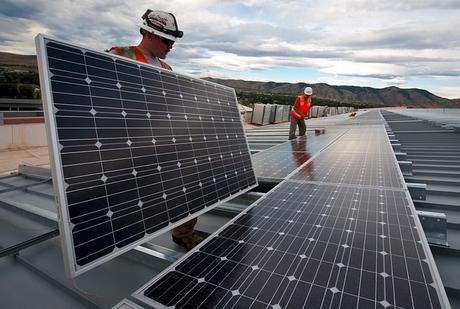Last year 8,000 jobs lost in the solar energy sector in the US alone, and it was the second consecutive year of decline. According to a report released on Tuesday, the energy and trade policies of the Trump administration and a tariff of 30% on imported solar panels hit the solar energy sector by uncertainty.
Still, the future is bright for solar as per the Solar Foundation. Over the past nine years, solar employment has grown 159% in all 50 states. From just over 93,000, now it has been increased to more than 242,000 jobs despite the two-year dip. The report says that the outlook for solar energy production in the long-term is positive.

Although Solar currently represents about 2.4% of generation of overall US electricity, it already employs twice the number of workers employed in the coal industry and almost five times of the workers working in the nuclear industry.
The states with well-established solar industries got hit very hard by the slowdown, including California, with nearly 10,000 job losses, North Carolina, Massachusetts, and Arizona. Whereas in 29 states including Florida, Illinois, and Texas and many with less established solar penetration continued to see job growth.
“It’s an optimistic report despite the fact we’re seeing job declines over the past two years,” said Andrea Luecke, CEO of The Solar Foundation. “That’s because the macro-picture since we first started tracking solar jobs in 2010 has exploded.”
California remains in the first place in terms of overall solar penetration with around 40% of the solar capacity of the US and still holding most of the employment nationwide by far. Florida is after California with the second rank in total solar jobs and overtaken Massachusetts.
Luecke predicts that around the world including the US, the long-term prospects for the solar industry are “extremely bright.” Over the past five years with the addition of 100,000 employment, there is 70% growth in the jobs. Comparing with other parts, the employment in the US has grown only 9.13% over the same period.
The employment in solar energy is falling behind the energy sectors like oil/ petroleum and natural gas industries due to the lack of support shown to the solar industry by the Trump administration.
According to the study author Ed Gilliland, many factors like tariffs on imported solar panels by Trump administration, uncertainties around state-to-state solar policy and in the US have an impact on the willingness of large-scale utilities to put money in solar.
“Prior to the tariffs set in January 2018, there was a lot of uncertainty in the industry, particularly among large energy utilities which delayed their projects and we saw less installation in the first three-quarters of the year.”
As the leading manufacturer of solar modules in the world, China has started reducing prices effectively by allowing a lapse in incentives and thus reducing the demand; the author found 30% tariff is unlikely to slow investment shortly.
“The impact of the price of modules is no longer of real concern,” said Gilliland. “In fact we would have seen more job losses if China hadn’t scaled back on incentives.”
The Trump administration’s support to the coal industry has not necessarily been detrimental to the growth in the solar energy sector, although the coal industry lost about 20 working mines last year.
“I don’t think people believe the Trump administration’s plan to revive coal is the smartest idea out there, and we now even have leaders in fossil fuel sectors saying solar is competitive and we need to integrate renewables into our business model,” says Luecke.
The recent policy goals set by the states for making energy consumption 100% renewable over the next three decades will be significant to boost the sector as per Gilliland. Last September Jerry Brown, California’s then-governor committed California to use 100% zero-carbon electricity by 2045.
“If people know this is where we’re going then they can begin to figure out how to get there,” Gilliland said.

